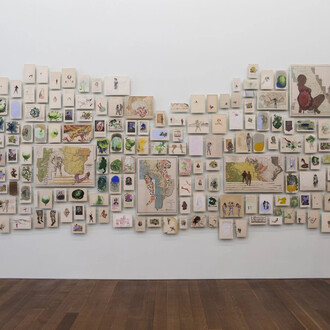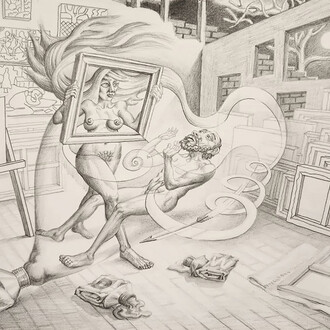The Art Institute’s spectacular 18th-century Neapolitan crèche returns once again this holiday season.
This crèche, or Nativity scene, tells the story of Jesus Christ’s birth using more than 200 painted terracotta figures staged in an elaborate environment inspired by 18th-century Naples. The upper register of the crèche contains the main characters of the Nativity—the Holy Family (Mary, Joseph, and Jesus) and the Three Wise Men, along with angels and shepherds. Surrounding them are scenes of Neapolitan daily life, including a raucous tavern, a bucolic pasture, and a street crowded with vendors.
These representations celebrate Naples as a cosmopolitan port city that included people from all walks of life. They also demonstrate the lens of exoticism through which many Europeans viewed visitors from other lands, non-Christians, and people of color. Though Naples had long been home to people from throughout the Islamic world, here they are shown as foreigners, confined to the biblical scene in the upper register and wearing turbans and billowing trousers that contrast with the rustic Neapolitan garb of the figures below.
Enlivening ancient biblical stories with modern costume and scenery is typical in the crèche genre and, more broadly, in European religious art since the Renaissance. By highlighting the vibrant social fabric of Baroque Naples, the crèche invites viewers to witness the miraculous amid the mundane and to delight in the hustle and bustle of everyday life.
Due to the fragility of the original silk costumes and exquisite embroidery, the Neapolitan crèche can only be on view for a few weeks every year. Don’t miss your chance to revel in Baroque artistry this season!
















